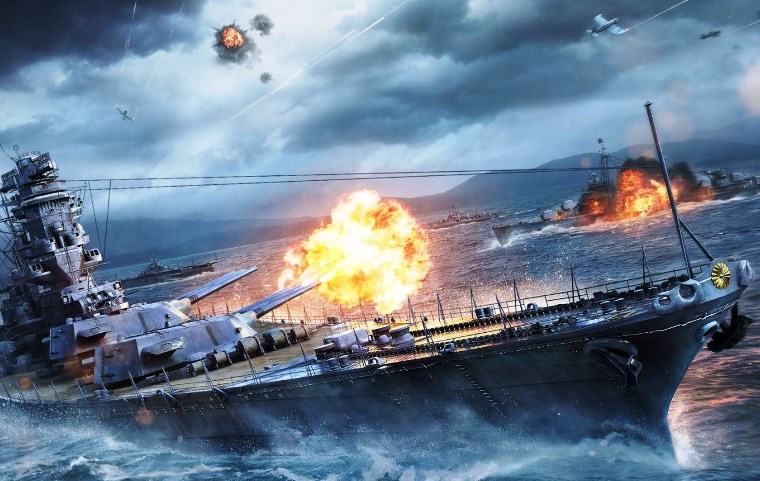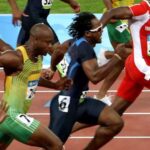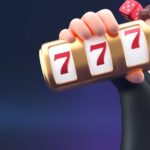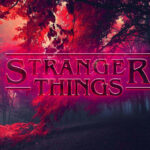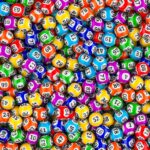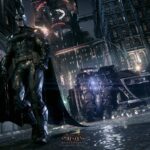I’m gonna cut to the chase: carriers in the game right now suck ass. I started playing the game after the CV rework was implemented, and honestly, I think they’re kind of boring. They also have no real counter and are infuriating to play against. I’ve seen old replays of what the RTS CVs were like, and they looked really fun, if also a bit challenging. It’s really a huge shame that the ship type with the most potential for creative gameplay and tactics is so one dimensional right now. So is there a satisfying middle ground between the pre- and post-rework CVs that would fix the class and make them fun and engaging to play and play against? I think so.
The goals of this thought experiment are the following:
- Make carrier gameplay more engaging and allow for more tactical creativity
- Structure the game mechanics to be able to implement more fair and active counterplay mechanics (make AA great again)
With the goals laid out, here are my general ideas for a second carrier rework:
- All carrier lines start at Tier VI. No more griefing Tier IIIs who can’t defend themselves. This also keeps CVs out of protected matchmaking for new players, since dealing with CVs will always be a less fun part of the game no matter how hard we try.
- No skipping tiers. Each CV takes forever to grind because of that.
- Carriers have a fixed number of planes. Regenerating reserves defeats any point to shooting planes down, restricts tactical creativity, and is just plain stupid.
- Gameplay mechanics:
- Planes are divided into individual squadrons of anywhere between 2-4 planes that can be selected so that the player can customize the makeup of each sortie with a maximum of four squadrons per sortie
- Example: two torpedo bomber squadrons, a dive bomber squadron, and a squadron of fighters for protection
- If there aren’t enough planes to form a full squadron, the leftover planes are added to the sortie as an incomplete flight.
- The entire sortie flies at the speed of its slowest planes
- When flying, the player can cycle between the POVs of each squadron. To attack, the player has to switch to the POV of the squadron of their choice to start the run.
- Fighter squadrons can be manually controlled too. More on that later.
- The mechanics of bombing runs remain unchanged
- Individual squadrons can be sent back to the carrier at any time, or the entire sortie can be sent back at once.
- When encountering AA, the squadron the player is directly controlling has the greatest ability to effectively dodge flak
- There is a consumable called “Evasive Action” that switches the POV to the entire sortie in a tightened, speed-boosted formation for twenty seconds, enabling the player to have an easier time maneuvering the entire sortie to avoid flak bursts. However, the player is unable to attack while the consumable is active, and the tighter formation means more planes take damage from a single flak burst if the player doesn’t dodge well enough. The consumable has a twelve second cooldown with unlimited charges.
- Planes cannot relay targeting data for the ships they spot. Planes can detect ships, but to the CV player’s teammates, they only show up on the minimap like they do in a cyclone. They can still get spotting damage credit.
- CV players have to activate Damage Control Party manually. For most CVs, the action time is 40 seconds, cooldown is 100 seconds. Fires prevent the launching of planes.
- Planes are divided into individual squadrons of anywhere between 2-4 planes that can be selected so that the player can customize the makeup of each sortie with a maximum of four squadrons per sortie
- Counterplay:
- AA mechanics are based around focusing down specific squadrons and whittling away the carrier player’s plane reserves, limiting their options as the match goes on.
- By default, all flak bursts are aimed at the squadron the CV player is directly controlling. The other squadrons can catch flak damage too if they happen to maneuver into a burst.
- The Manual Fire AA commander skill returns. Players with the skill can choose which specific squadron in a sortie gets the brunt of the AA fire and flak bursts instead of the default option. Unless the CV player engages their Evasive Action consumable, the targeted squadron will take severe damage, and in most cases be completely destroyed. An AA-spec Minotaur or Wooster would pretty much insta-delete them, even without DFAA.
- The DFAA consumable triples AA DPM and increases the amount of flak bursts. This forces the carrier player to choose to either use the “Evasive Action” consumable to avoid the additional flak bursts and be unable to attack for 20 seconds, or commit to the attack run and let the rest of the sortie get absolutely shredded by flak. If the attacking squadron is the last one in the sortie, it will get wiped out, even if it’s able to get off a strike.
- Fighters are actually useful and their effectiveness is dependent on player skill! They are treated similarly to bomber squadrons and can be added to a sortie just like bombers.
- The player can manually control fighter squadrons and shoot their guns to attack the individual squadrons of the enemy carrier player. Fighters are limited by an ammo counter and automatically return to the carrier when it’s expended. Air-to-air battles are decided by whoever has better aim and makes better tactical judgements (like focusing down low-health squadrons)
- Additionally, the player can choose to leave a fighter squadron behind to patrol an area for a limited time before returning to the carrier, just like how they are used now. They’re less effective against planes this way, functioning more as a spotter and an area denial tool.
- AA mechanics are based around focusing down specific squadrons and whittling away the carrier player’s plane reserves, limiting their options as the match goes on.
With gameplay mechanics out of the way, let’s retool the tech trees:
- USN Main Line CVs are characterized by the largest plane capacity of all other CV lines, with a balanced air wing of fighters, hard-hitting HE dive bombers, and torpedo bombers that have good health and relatively slow speed. They also have longer-lasting DCP.
- Langley => Casablanca => Ranger => Yorktown => Midway
- USN Split Line CVs start at T8 and are smaller, stealthier, and faster than their main line counterparts. Their air wings are smaller and more focused on support. They have abnormally large fighter squadrons, HE rocket planes, and torpedo planes that carry a smoke screen consumable. They also share the main line’s longer-lasting DCP.
- Independence => Wasp => Essex
- IJN Main Line CVs have very strike-heavy air wings and the fastest planes with the lowest health. They have the most powerful AP bombs and abnormally large torpedo bomber squadrons with average torpedoes. They only have the standard DCP however, making them more vulnerable to fire and floods.
- Hosho => Taiyo => Akagi => Taiho => Hakuryu
- IJN Split Line CVs have a more balanced air wing than the main line, with HE dive bombers, torpedo bombers with the slowest, hardest-hitting torpedoes, and extra fighter squadrons. They start at T8, and just like the main line, their DCP is only standard. (Hayataka is a made up paper ship. Think of it as a smaller Hakuryu)
- Zuiho => Shokaku => Hayataka
- RN CVs have an armored flight deck and a reduced cooldown DCP, enabling them to operate closer to the fight than other CV lines. This is balanced by having the smallest air wings tier for tier with the slowest, beefiest planes, consisting of fighters, HE level bombers, and hard-hitting torpedo planes.
- Argus => Hermes => Illustrious => Implacable => Audacious
- KM CVs have perfectly accurate secondaries, below-average air wing size consisting of fast planes, and decent protection. They have good fighters, AP rocket planes, and torpedo bombers with fast, low-damage torpedoes. (Peter Strausser is a hypothetical Graf Zeppelin with most of its larger secondary guns removed in favor of a larger air wing)
- Rhein => Weser => Peter Strausser => August von Parseval => Manfred von Richtofen
All other remaining CVs in the game become Premium ships. Premium CVs largely retain their existing gimmicks that are adapted to the new gameplay mechanics.
- USN:
- T8: Lexington (abnormally large air wing for its tier)
- T9: Enterprise (AP dive bombers), Saipan (small wing of T10 planes)
- T10: Franklin Delano Roosevelt (large beefy HE level bombers and torpedo planes that lack the Evasive Action consumable)
- IJN:
- T8: Ryujo (fastest T8 IJN CV), Hiryu (HE rocket planes)
- T9: Kaga (abnormally large air wing for its tier)
- RN:
- T8: Ark Royal (abnormally large air wing for its tier and faster torps), Indomitable (HE rockets and level bombs, no torps)
- T9: Colossus (AP rockets and torps)
- KM:
- T8: Graf Zeppelin (secondaries memelord, AP dive bombers and torps, no rockets)
- T10: Erich von Lowenhart (skip bombers and HE dive bombers, no torps)
These are just my thoughts, and I would love to hear your opinions in the comments. What do you all think?
Source: Original link
- CV rework questions
Hello reddit! I have a few questions about what we may know so far about the CV rework! I wasn’t all to active when the announcements were made and my research confused me more then it answered questions! Since i’m a CV main myself the news made me stop playing since they made me quite…
- Proposal CV Rework of the CV Rework
DISCLAIMER: THIS WILL FOCUS ON THE CVs THEMSELVES LEAVING PLANES OUT OF THE QUESTION FOR NOW Alright, we all know that one of the most hated aspects about facing CVs is that you cannot directly damage them and the most you can do is shoot down planes hoping to find the CV at the…
- Post CV rework issues, and suggestions to improve the game for all.
There are a lot of players dissatisfied with the game since the CV rework was introduced. There has been an upheaval of the meta, and for many the game meta they really enjoyed was removed and replaced with game play they struggle to enjoy, despite many of them putting plenty of time into relearning the…
© Post “(Very Long Post) Theoretical Second CV Rework: Can We Do a Better Job Than Weegee?” for game World of Warships.
Top 10 Most Anticipated Video Games of 2020
2020 will have something to satisfy classic and modern gamers alike. To be eligible for the list, the game must be confirmed for 2020, or there should be good reason to expect its release in that year. Therefore, upcoming games with a mere announcement and no discernible release date will not be included.
Top 15 NEW Games of 2020 [FIRST HALF]
2020 has a ton to look forward to…in the video gaming world. Here are fifteen games we’re looking forward to in the first half of 2020.
Related Tags:


